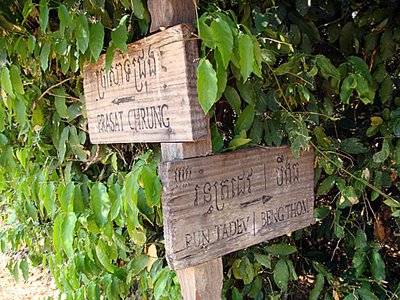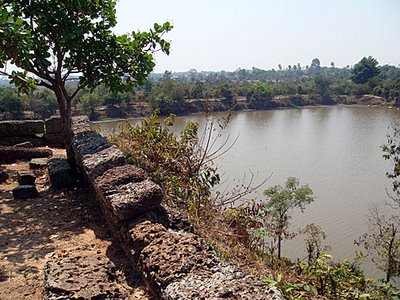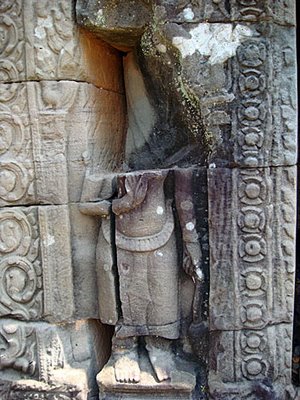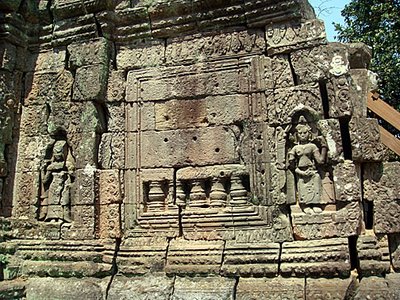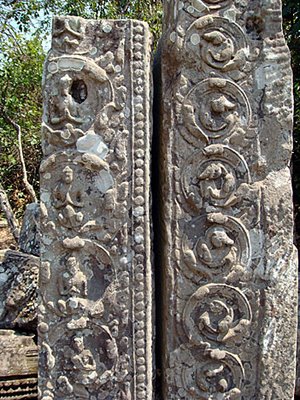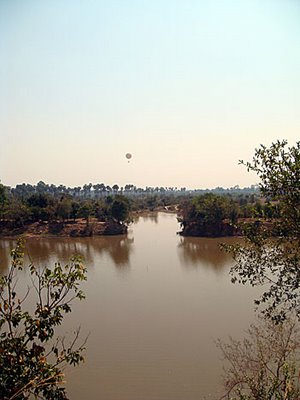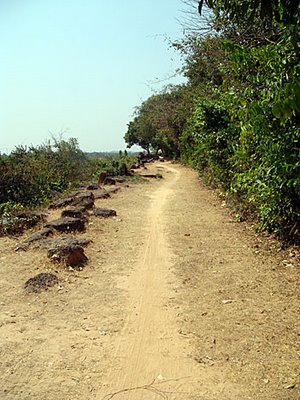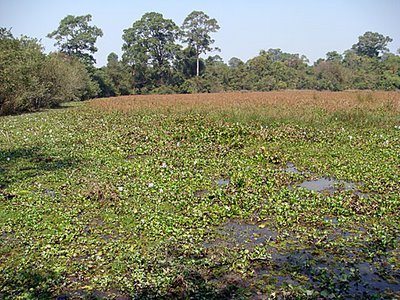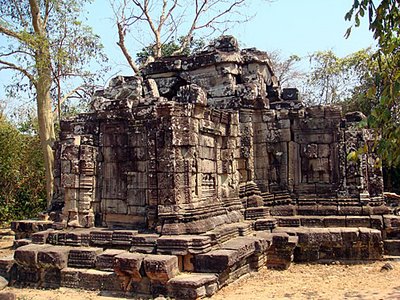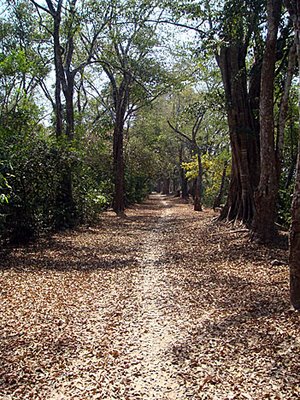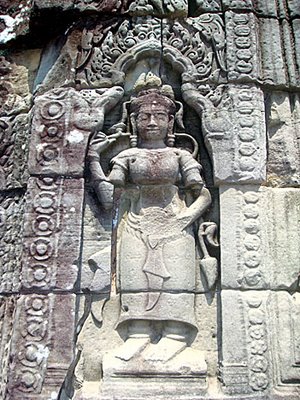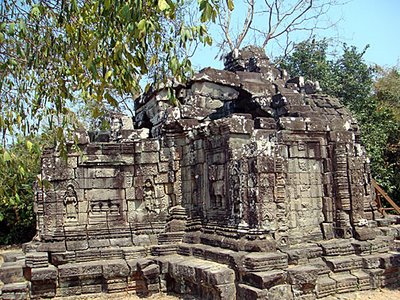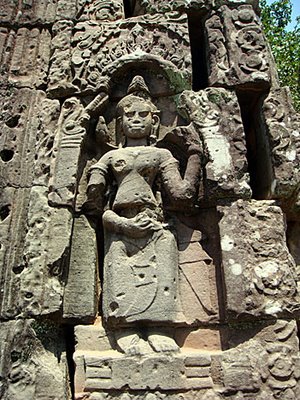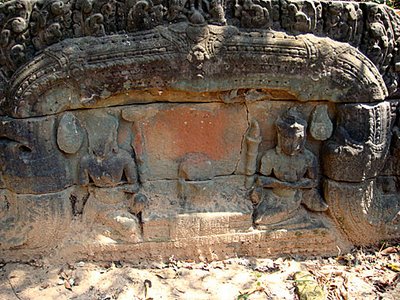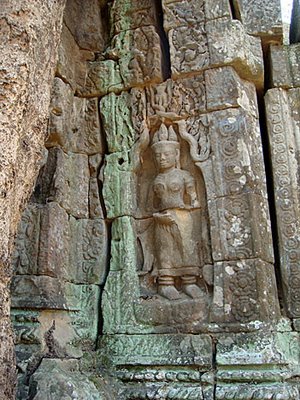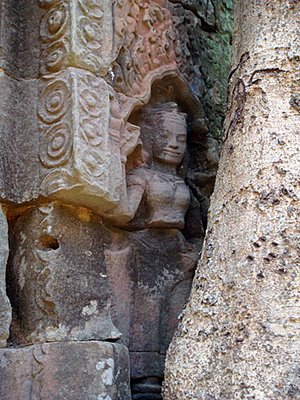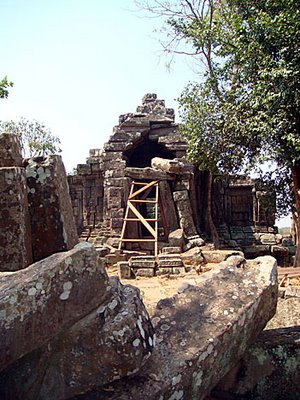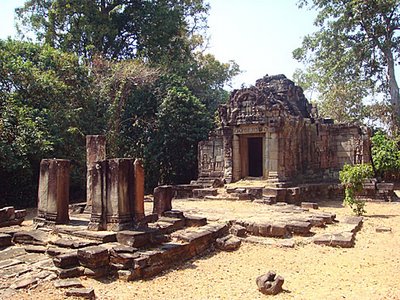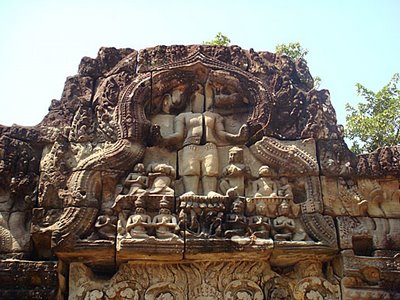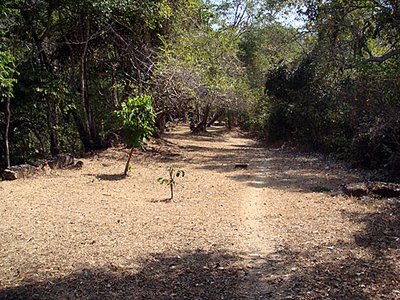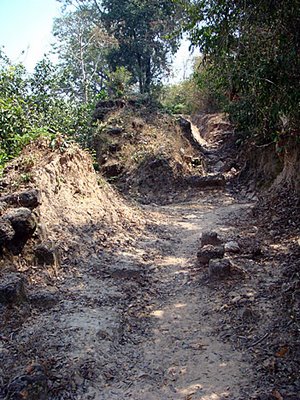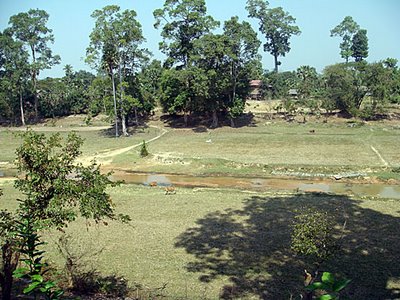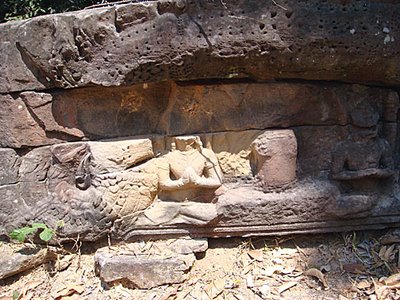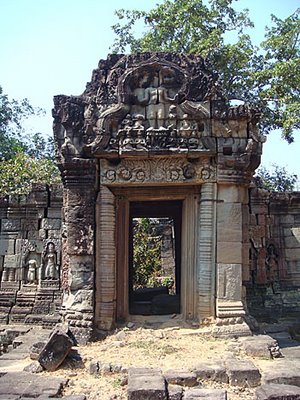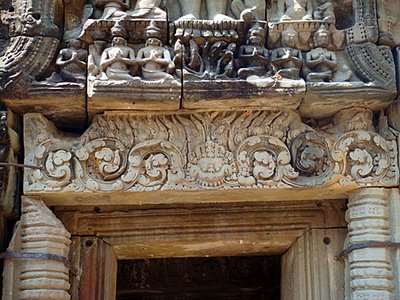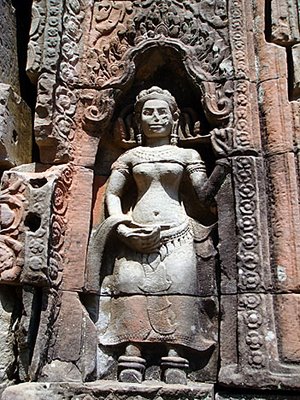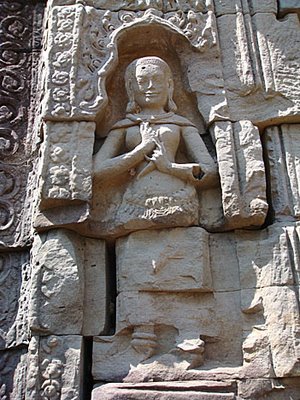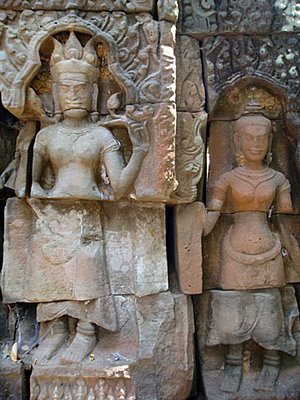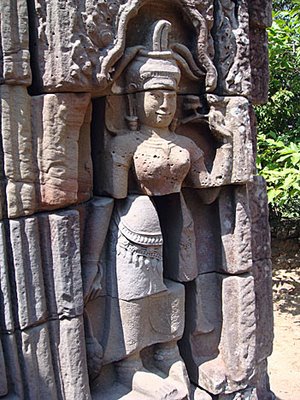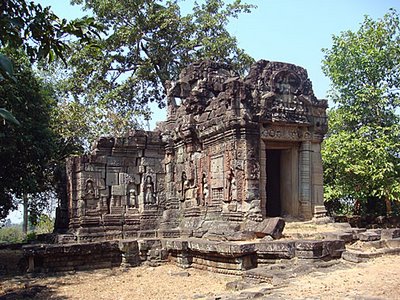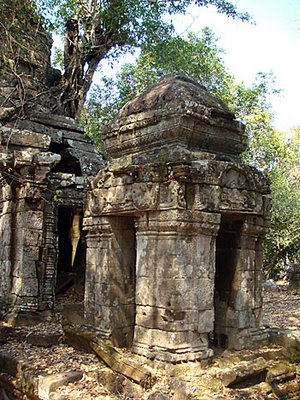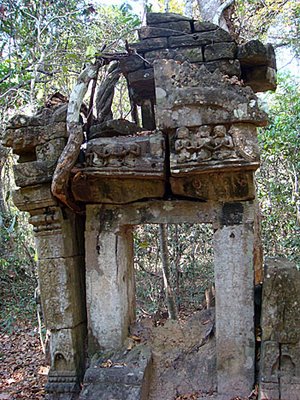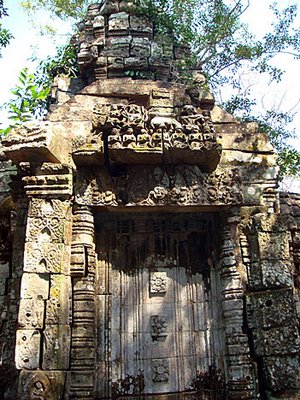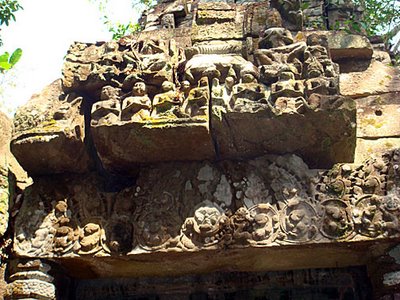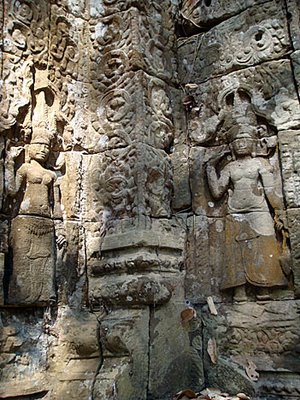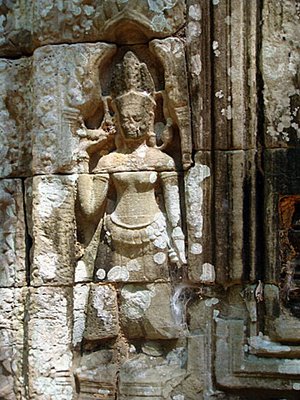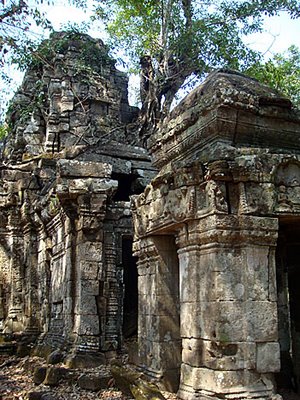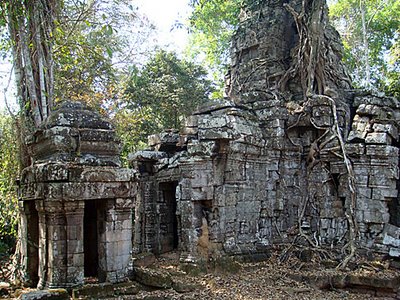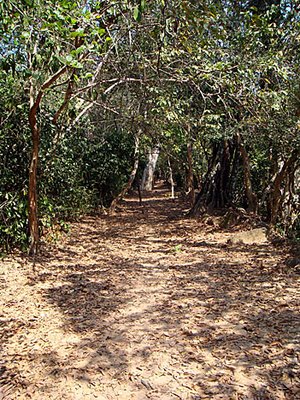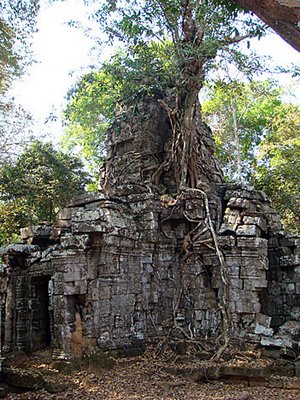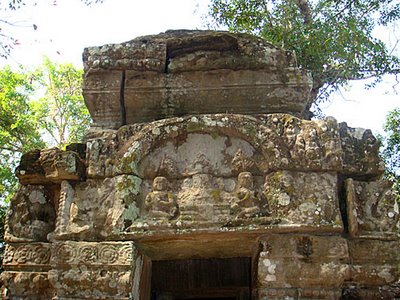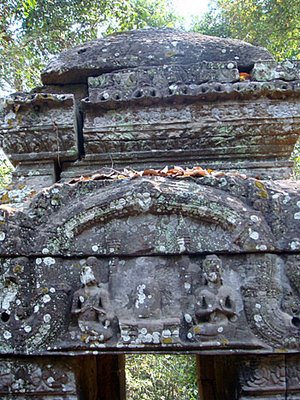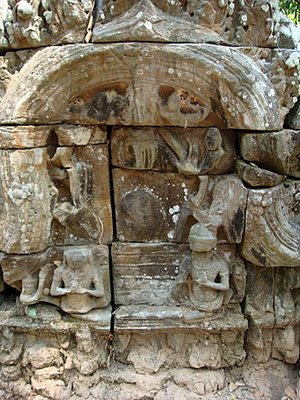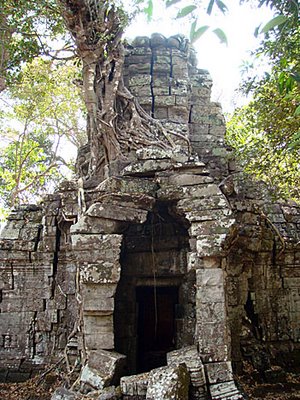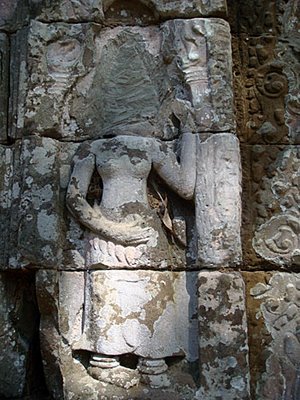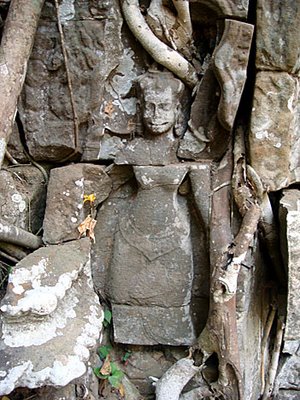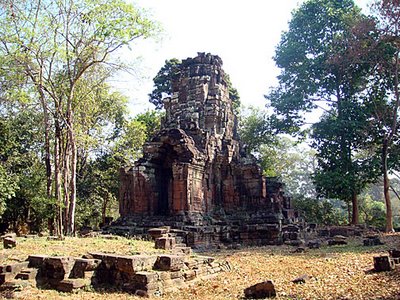 The southeast corner shrine, Prasat Chrung, at Angkor Thom
The southeast corner shrine, Prasat Chrung, at Angkor Thom
Very few visitors to Angkor Thom take the time to visit, literally, the four corners of this giant ancient walled city. Situated at each corner is a shrine temple,
Prasat Chrung, that used to contain a stele with important information about the life and times of the city's builder Jayavarman VII, though they are now long gone and held under lock and key at Angkor Conservation. The four Prasat Chrung's are all similar in style, in a cruciform shape with two open porches at the east and west and two false doors at the other cardinal points. The outside walls are decorated with devatas and with false windows with balusters and blinds. Each temple has remains of standing Lokeshvaras in varying degrees of ruin, as are the temples themselves. Starting at the South Gate, I hauled my cycle onto the earth embankment that runs along the inner side of the eight metre high laterite wall and headed for the Prasat Chrung that occupies the southeast corner. The leafy track was under tree cover for much of the straight route and bouncing over tree roots I reached the corner in less than ten minutes. On my right side was a sheer drop down to the 100 metre wide moat, where locals were busy with their fishing nets. In front of me, a few trees gave the shrine some shade, whilst the remains of broken pediments had been reassembled on the ground, though there was little visible carving. A broken Lokeshvara pediment sat on top of a doorframe in front of the terrace leading to the temple itself, where aside from a few devata, some of which had been hacked at and their faces removed, there was little iconography to see. The large Lokeshvara on the east door pediment is now obscured by wooden beams keeping the doorframe from collapsing. With the sun getting hotter and much more of my Angkor Thom cycle ride to complete, I carried on in an anti-clockwise direction and headed along the shady track for my next discovery, the East Gate, aka The Gate of the Dead.
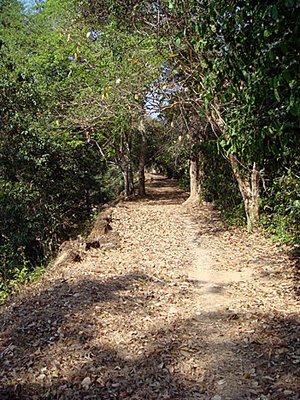 The shaded cycle track along the top of Angkor Thom's walls
The shaded cycle track along the top of Angkor Thom's walls
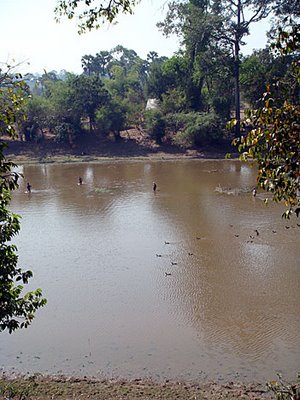 Locals use their fishing nets to catch their lunch in the moat surrounding Angkor Thom
Locals use their fishing nets to catch their lunch in the moat surrounding Angkor Thom
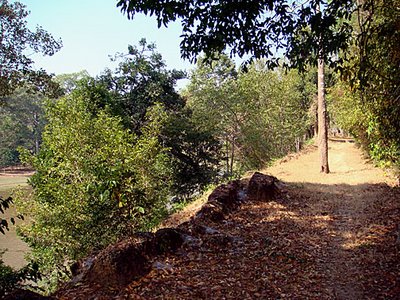 The track on the earth embankment and on the left, the edge of the outside wall
The track on the earth embankment and on the left, the edge of the outside wall
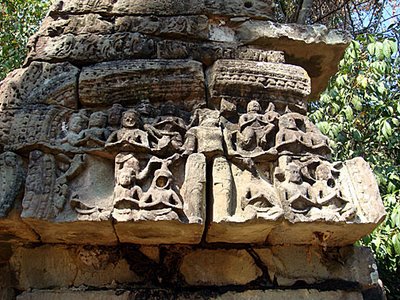 The ruined Lokeshvara and worshippers pediment on the solitary doorframe
The ruined Lokeshvara and worshippers pediment on the solitary doorframe
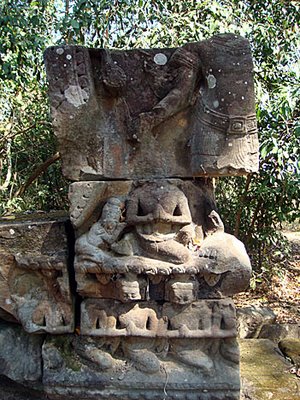 Another Lokeshvara (top right) with acolytes but much of the carving is missing
Another Lokeshvara (top right) with acolytes but much of the carving is missing
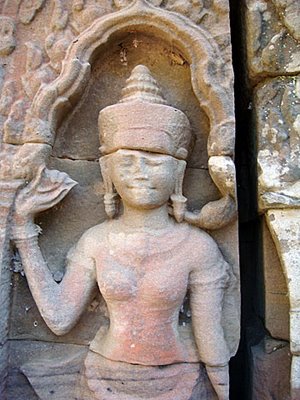 One of the few devata to escape the temple robbers
One of the few devata to escape the temple robbers
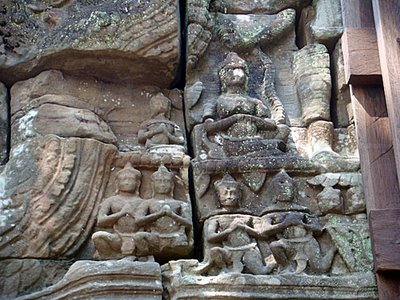 This pediment with a large Lokeshvara in situ is obscured by large wooden beams supporting the east entrance in place
This pediment with a large Lokeshvara in situ is obscured by large wooden beams supporting the east entrance in place
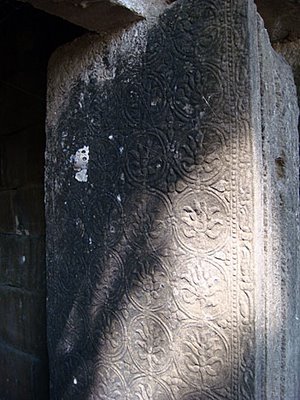 The temple doorjamb with some tapestry carvings for decoration
The temple doorjamb with some tapestry carvings for decoration
Labels: Angkor Thom, Prasat Chrung
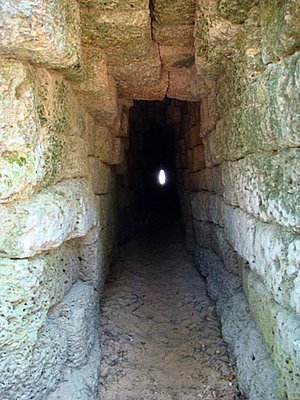 Run Tadev was either a very long laterite bridge or was used as an irrigation channel or sluice gate to allow water to run into the moat at the far end
Run Tadev was either a very long laterite bridge or was used as an irrigation channel or sluice gate to allow water to run into the moat at the far end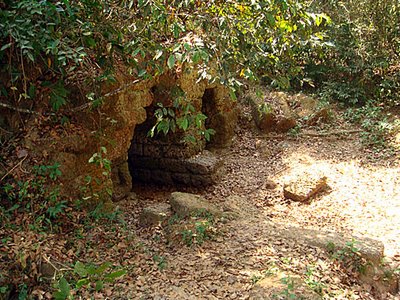 The laterite structure of Run Tadev is covered by earth and vegetation and the other end of this long tunnel opens out at the foot of the moat
The laterite structure of Run Tadev is covered by earth and vegetation and the other end of this long tunnel opens out at the foot of the moat